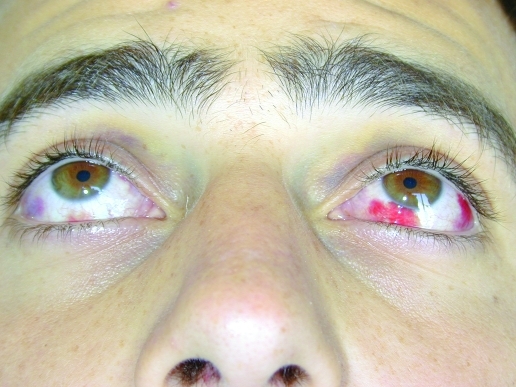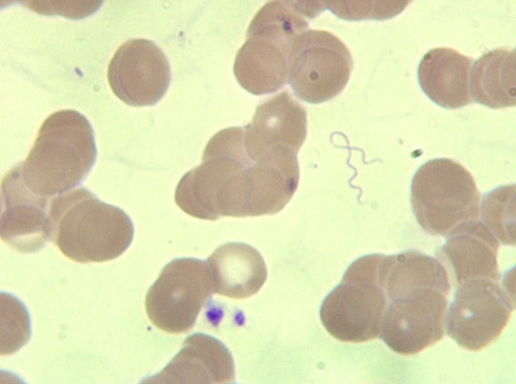DESCRIPTION
A 16-year-old, previously healthy boy came to the hospital with a history of high fever for several days, severe headache, myalgias, nausea and vomiting. He reported a history of tick exposure a week before during his visit to a mountainous area in southern Spain. On examination he appeared to be acutely ill; his temperature was 39.5°C, and he presented with conjunctival haemorrhages. Laboratory studies revealed thrombocytopenia. The diagnosis was made by visualisation of spirochetes in a blood smear stained with Giemsa. The patient was treated with doxycycline, 100 mg twice a day, for 5 days. The therapeutic effect was followed up by a gradual clinical resolution of the conjunctival haemorrhages and a remission of symptoms.
Each year, many residents of and visitors to endemic regions are exposed to the vector of tick-borne relapsing fever (TBRF),1 an under-recognised and underreported disease. The illness is caused by an infection from the Borrelia species (spirochetes) that may be acquired through the bite of an infected tick (Ornithodoros species).2 Most cases are acquired from exposure to rustic tick-infested cabins and caves. Frequently, TBRF is a disease affecting travellers, who may return home with the disease to areas where physicians are not familiar with it. Therefore, it is important to know that Borrelia often invades the eye and may present ocular manifestations. Likewise, the infection needs to be considered along with more conventional causes of ocular signs, particularly in regions where TBRF is common.
Figure 1.
Bilateral conjunctival haemorrhage.
Figure 2.
Borrelia spirochete in stained peripheral blood smear.
Footnotes
Competing interests: None.
Patient consent: Patient/guardian consent was obtained for publication.
REFERENCES
- 1.Roscoe C, Epperly T. Tick-borne relapsing fever. Am Fam Physician 2005; 72: 2039–44 [PubMed] [Google Scholar]
- 2.Cadavid D, Barbour AG. Neuroborreliosis during relapsing fever: review of the clinical manifestations, pathology, and treatment of infections in humans and experimental animals. Clin Infect Dis 1998; 26: 151–64 [DOI] [PubMed] [Google Scholar]




